The words “full moon” in many languages

It is said that there are more than 6,000 languages worldwide (this is hard to imagine) and it is a fascinating concept to think, there are probably as many words for “full moon”.
Here we begin our little journey to the full moon. A few words about the fascinating quest of the greater purpose, that includes the full moon circulating through our lives. In layman’s terms and not always scientific (astronomy experts – don’t look too closely!). We would like to wish you illuminating moments. Enjoy!


It is said that there are more than 6,000 languages worldwide (this is hard to imagine) and it is a fascinating concept to think, there are probably as many words for “full moon”.
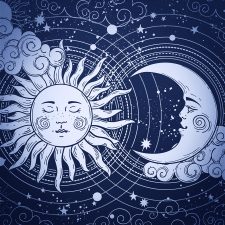
A full moon is when the Sun and the Moon are facing opposite, being in opposite direction from an Earth perspective.
This might feel astonishing if one imagines that the Moon is on one side, the Sun on the other and the Earth in between? Shouldn’t the Earth throw a shadow onto the Moon? Bingo – this is exactly what she does! But only when the Moon is exactly on the Earth orbit, the so called “ecliptic”. When this takes place, we speak of a lunar eclipse!
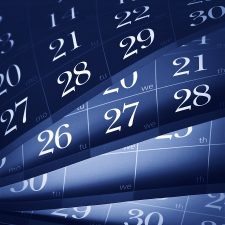
The Moon needs 27.33 days to circle around the Earth. Something that is also referred to as “sidereal time”. But because the Earth orbits the Sun, just like the Moon orbits the Earth, the Moon has to travel two further days in order to resume the same position to the Earth and Sun. This is then called the “sidereal time”. In order to determine the point of time of the reoccurring full moon, the sidereal time serves as basis.

We already know now that the moon month is mostly shorter than the calendar month, being on average approximately 29.5 days. If full moon falls on the first or second of a month, it is possible that another full moon occurs in the same month, for instance in July 2004:
Friday, 2 July 2004, 01:08:54 pm
Saturday, 31 July 2004, 08:05:06 pm
This event is also known as “blue moon”.

The answer is: “everywhere at the same time”. This refers to the so called Universal Time (UT) though, which is used for general astronomical events. We have already learnt that full moon is an astronomical event, where the moon, sun and the earth play a role by being in a specific position. So, full moon takes place at a specific time in the outer space. This point of time is specified by astronomers namely by the Universal Time.

There are multiple ways of approaching this question. If we look at it from a purely theoretical standpoint, we might be tempted to say that the full moon is infinitely short, since the phases of the moon are changing continuously. The moon is not yet quite full shortly before the full moon, and is already waning shortly afterwards.
However, there is a practical aspect that lets us quantify the full moon as a finite and measurable span of time: Since the Sun is significantly bigger than the Moon, its rays are able to reach just a little over half of the Moon’s surface. This means that the timespan in which the visible side of the Moon’s surface is irradiated (as seen from Earth) is longer than infinitely short.

Whether scientists, astrologers or esoterics, they agree on one thing: the moon influences earth and life on earth. For instance, it regulates the tides through its magnetism. Also continents feel the consequence of this magnetism and either raise or lower their position sometimes up to 26 cm.

In nature it is a known fact: for some animal species, mating takes place at full moon. However, the examples that can be found on this subject are rather simple. Full moon serves in some cases indirectly as the cause (for instance through the high water levels during the tides that the horseshoe crab uses to deposit its eggs) or also as the signal for both sexes of a species to begin at the exact same time to safeguard their future existence (a particular type of fly or also corals). It is understood that also wolves are led by full moon when it is time to mate.

… that people are looking for an argument at full moon or are especially happy …
… that if full moon is surrounded by a haze, a person dies …
… that you raise your hat three times to the moon (being a man) or you make a curtsey (being a woman), in order to protect yourself from misfortune until the next full moon …
… that whoever does not chink glasses with full moon at least once, does not deserve any happiness [Greek toast] …
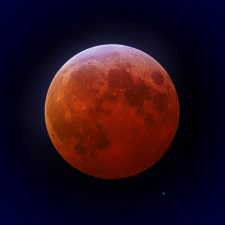
During a lunar eclipse, the Moon moves through the shadow of the Earth. Which means, that the Earth is positioned quite exactly between the Sun and Moon and casts its shadow onto the Moon. This is only possible at full moon and if some other requirements are met. Depending on whether the moon passes the partial or the core shadow of the Earth, we speak of a partial or total lunar eclipse.
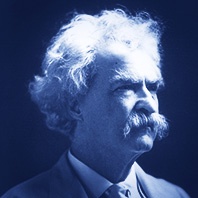
There is a famous quote by the American writer Mark Twain (1835–1910), taken from his satirical travel guide »A Tramp Abroad«, published in 1880: »Everyone is a moon, and has a dark side which he never shows to anybody.« He alludes to the astronomical fact that the Moon only turns one side towards the Earth, due to its synchronous rotation. The reverse side of the Moon remains hidden to us when observed from Earth.
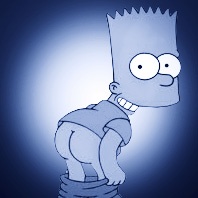
The human buttocks are being linked to the Moon at times, just like in the case of the so-called sexual position “full moon”. This is due to the large, round shape of the buttock cheeks, which could occasionally remind of the lunar globe when properly lit or observed from the correct angle.
If someone shows their bum publicly, he or she usually does so to break a socially accepted norm and to express their protest or contempt. Or simply because of the fun of it provoking other people. This “baring the behind” is called “mooning”. It derives from the verb “to moon”, which means “to expose to the (moon)light”.
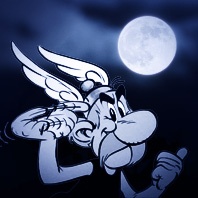
Who doesn’t know them, the fearless Gauls Asterix and Obelix, who have been making the hearts of comic fans leap for joy since decades and who impress again and again through witty texts and masterful drawings. The stories originate from the pen of the French illustrator Albert Uderzo (1927–2020), who created, together with his fellow countryman René Goscinny (1926–1977), the first comic in the year 1959, and with that, brought the adventures of the brave Gaul to life.

The tarot is a pack of playing cards that is used for mystical interpretations. It has a long tradition, possibly dating back to the ancient Egyptian time. Playing cards started to circulate in Europe at around the 14th and 15th century, among them also the so called “tarock” (in Italian “tarocchi”), which is considered to be the predecessor of what is now known as tarot, and still today established independently as a game of cards.
Over time, the symbolism and interpretation begins to move to the forefront and the cards become a popular tool for mystics and fortune tellers.

In many languages, inside the word for the weekday »Monday« you find the word »moon«, sometimes slightly modified but mostly easily recognised. This does not appear to be a coincidence. But why? Surely, the Moon cannot only be seen on Mondays and no other good reasons comes to mind quickly why a specific day of the weekly cycle should be connected to the Moon.

»The Lion King« from 1994, is one of the most successful animated movies, and just like in other works from the house of Walt Disney (»The Lady and the Tramp« and others), we are able to gaze at the full moon up in the sky in nightly scenes.
Particularly well-known is the image, where Simba dances across a tree trunk with his companions, which enables them to cross a large river in front of the backdrop of a gigantic full moon. This motif has also been used for various movie posters and can also be watched in the movie trailer:

Today is the last day of 2012 and we asked ourselves when there has been or will be a full moon in the past or the future at the turn of the year. What a fascinating picture, if you are imagining also the full moon next to the firework welcoming the New Year. The spectacle of humans meets the eternal beauty of the universe …
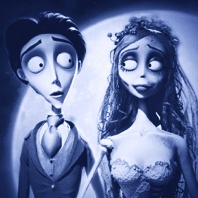
Fitting in with today’s full moon and the forthcoming events of Halloween, we dedicate this article to the stop motion movie »Corpse Bride« (2005) by Tim Burton, the master of bizarre and subtle productions. The movie is based on a Russian legend »Corpse Bride« and captures the story of a wedding between two people of varying social backgrounds (Victor & Victoria) or rather differing worlds (Victor & Emily), with the resulting tension.
It is 1969 – John Fogerty, the front man and lead guitarist of the rock band Creedence Clearwater Revival (CCR) writes the song »Bad Moon Rising«. He was inspired by a black-and-white movie called »The Devil and Daniel Webster«, in which almost an entire city is obliterated by a hurricane. Fogerty creates gloomy lyrics that warn about the threat of destruction and its bringer of ill luck, being the rising Moon.

Let us still stay with the music for a little while and let us bring our attention to a grand musical genre of theatre, the opera. We recently saw TOSCA (from Puccini) in Madrid and lo and behold! In the first act, we suddenly heard »luna piena«, which is Italian for full moon. A real highlight!
Then we had the idea to rummage through some libretti (opera lyrics) to find out if the full moon motif may also play a part in other operas. For this purpose, one can view the libretti online. We were interested in particular in the actual mentioning of it, as these were created by the composers themselves, whereas the appearance of the full moon on stage was usually the part of the stage designer.